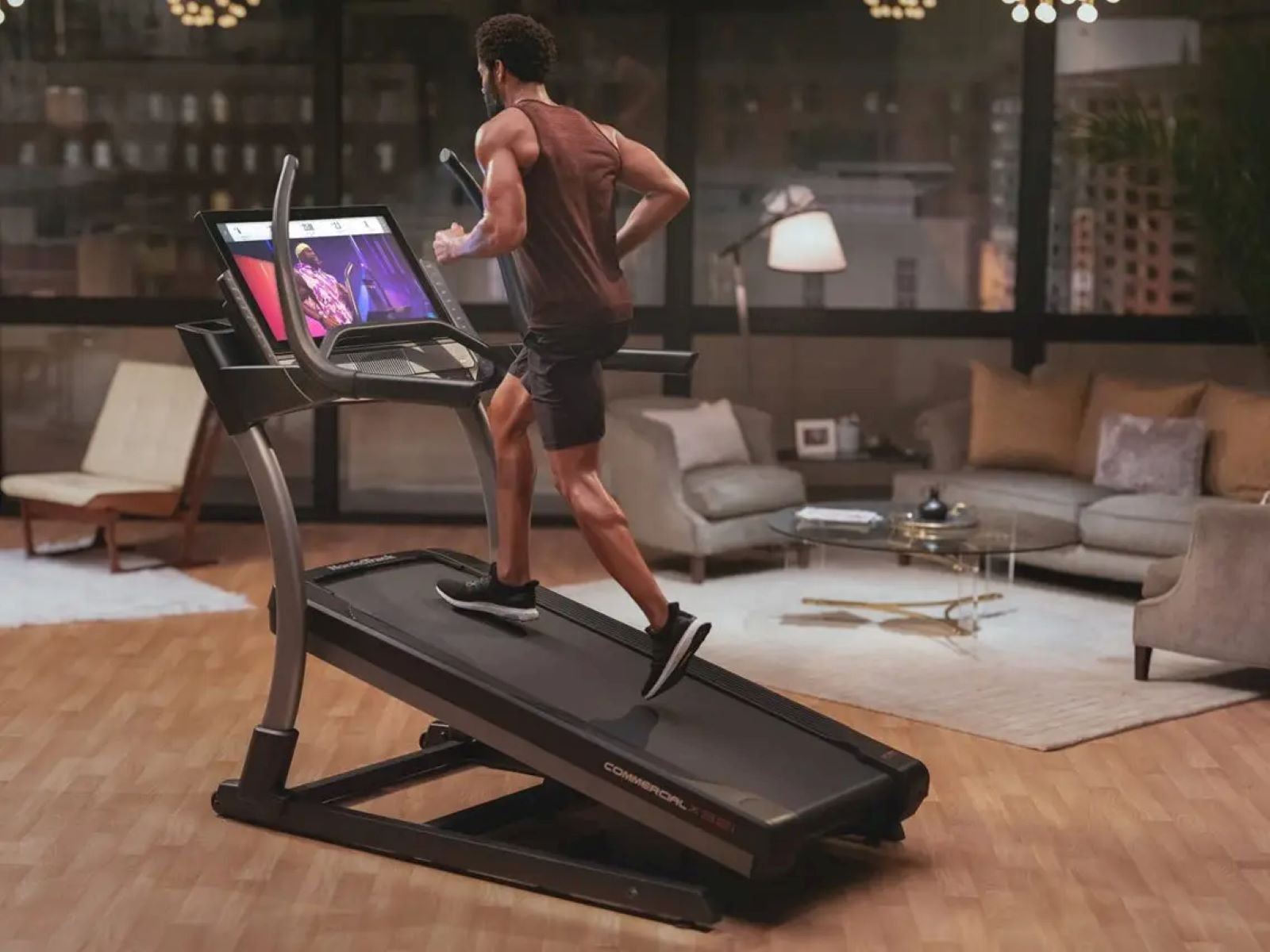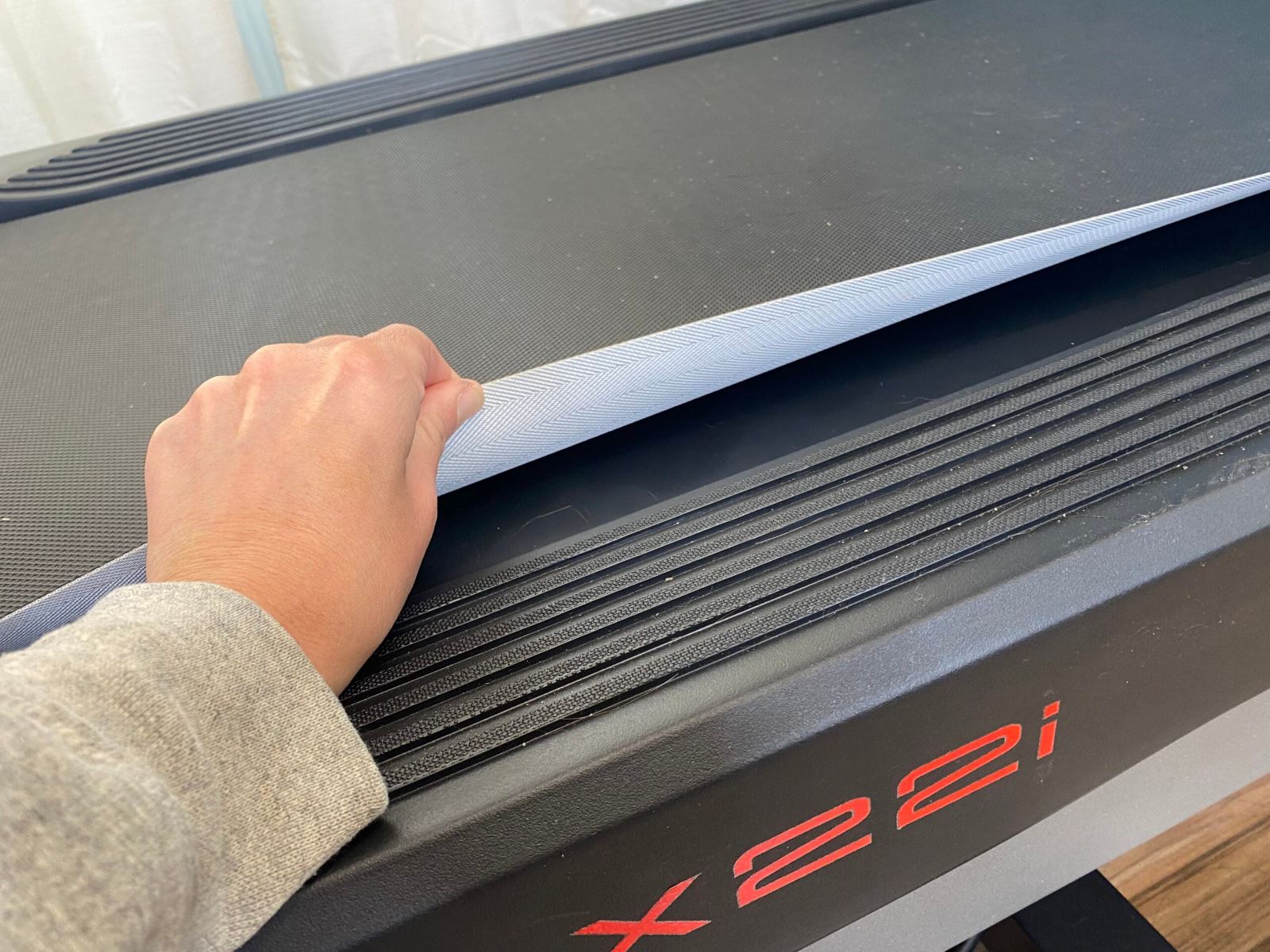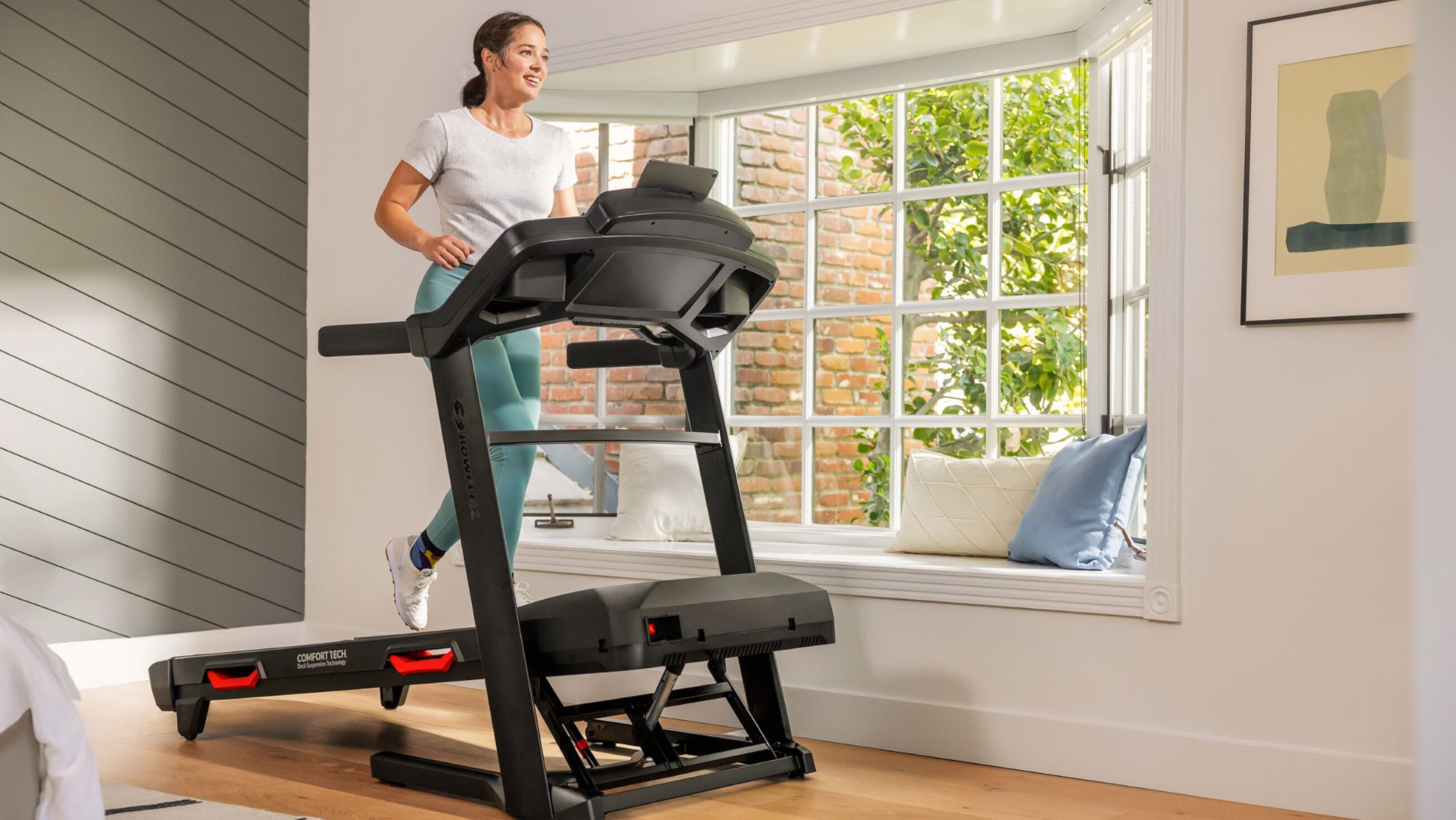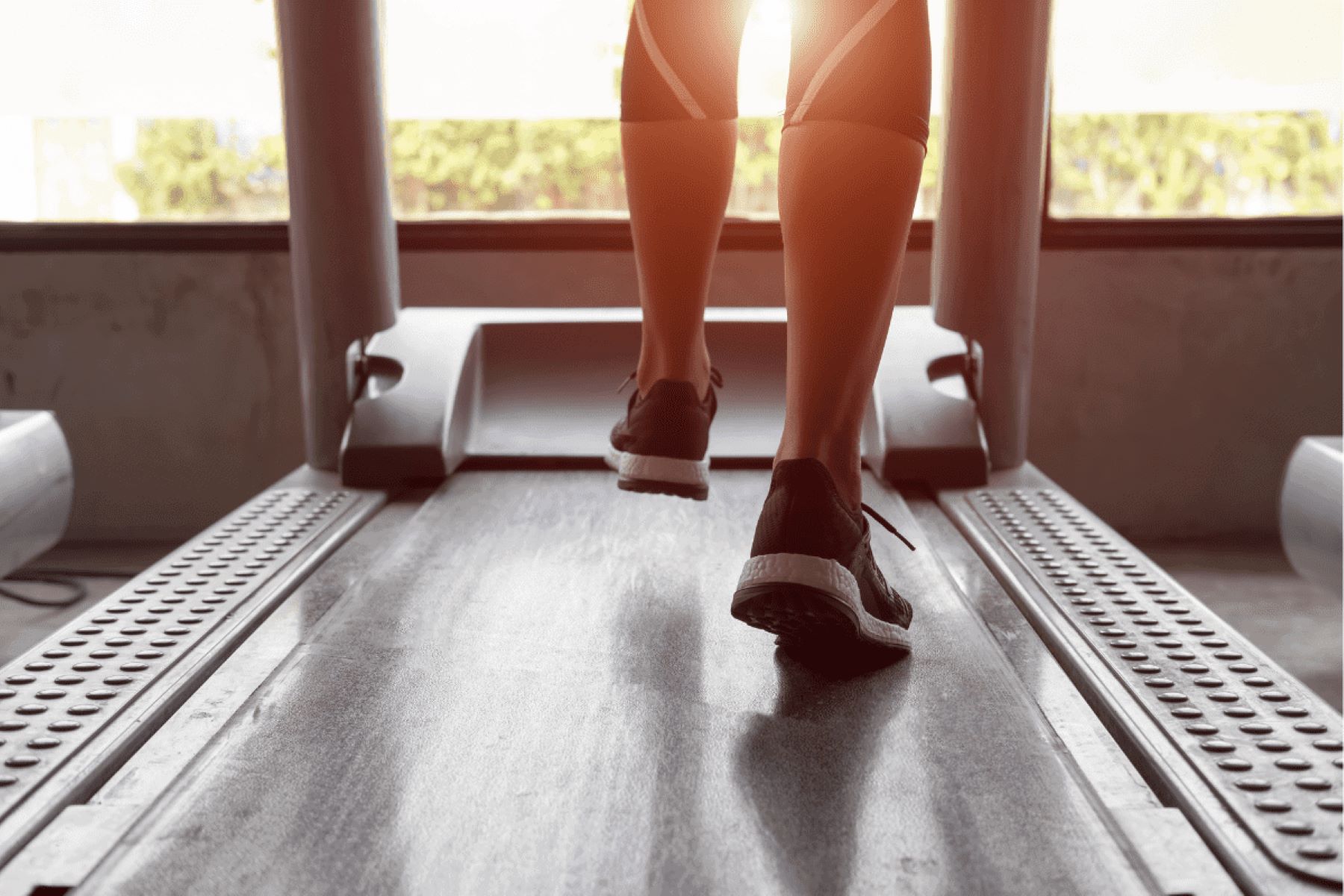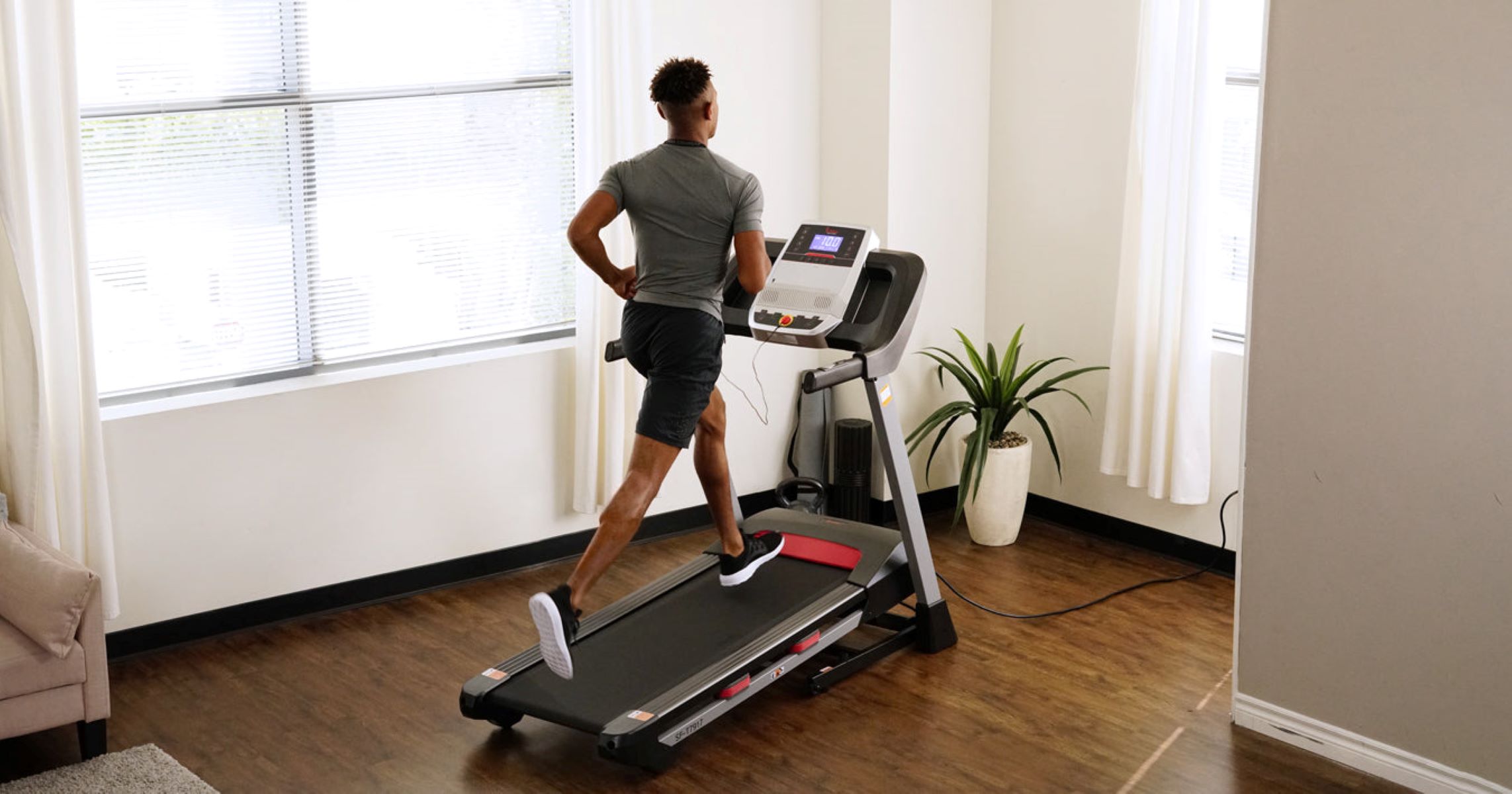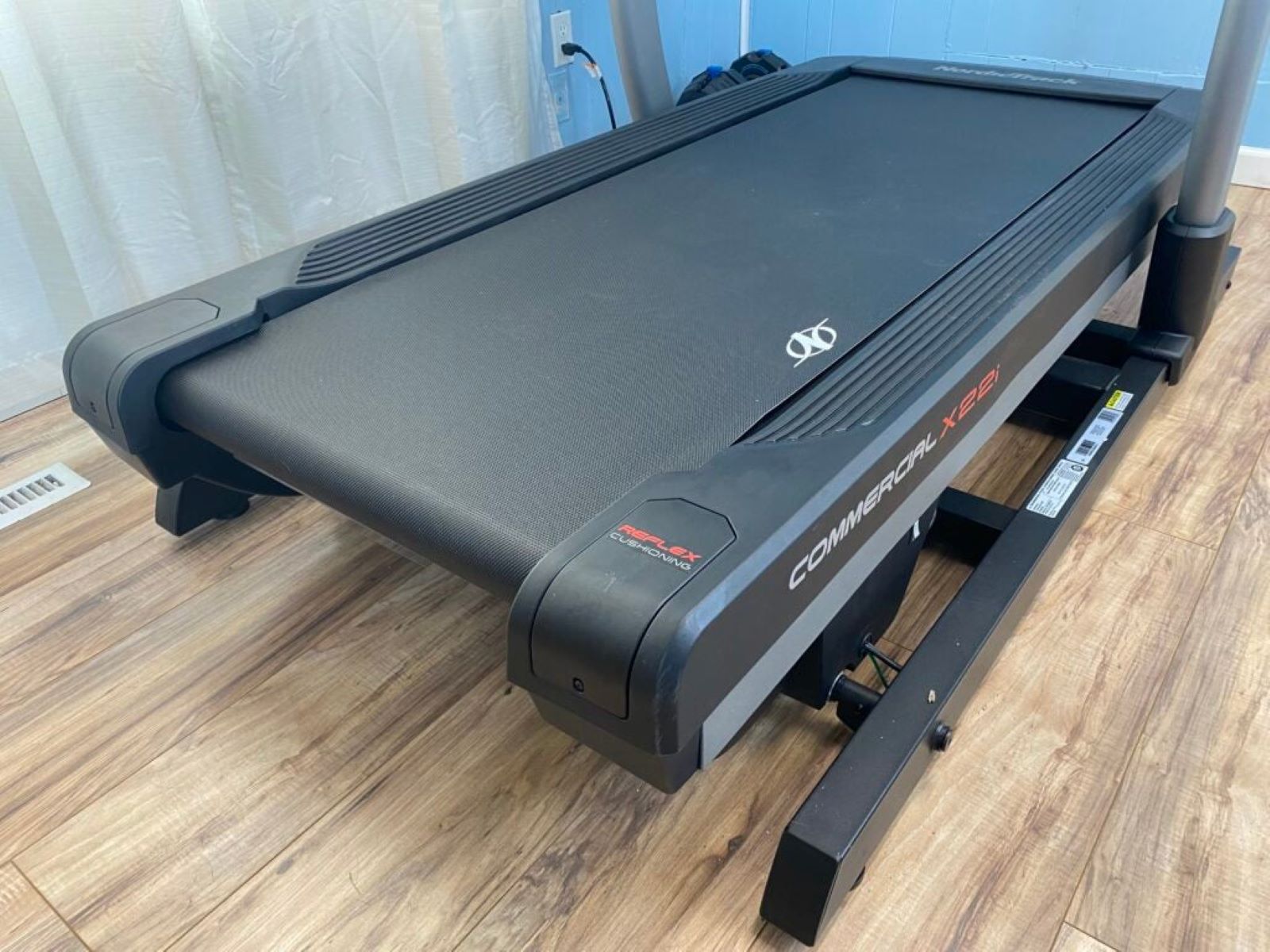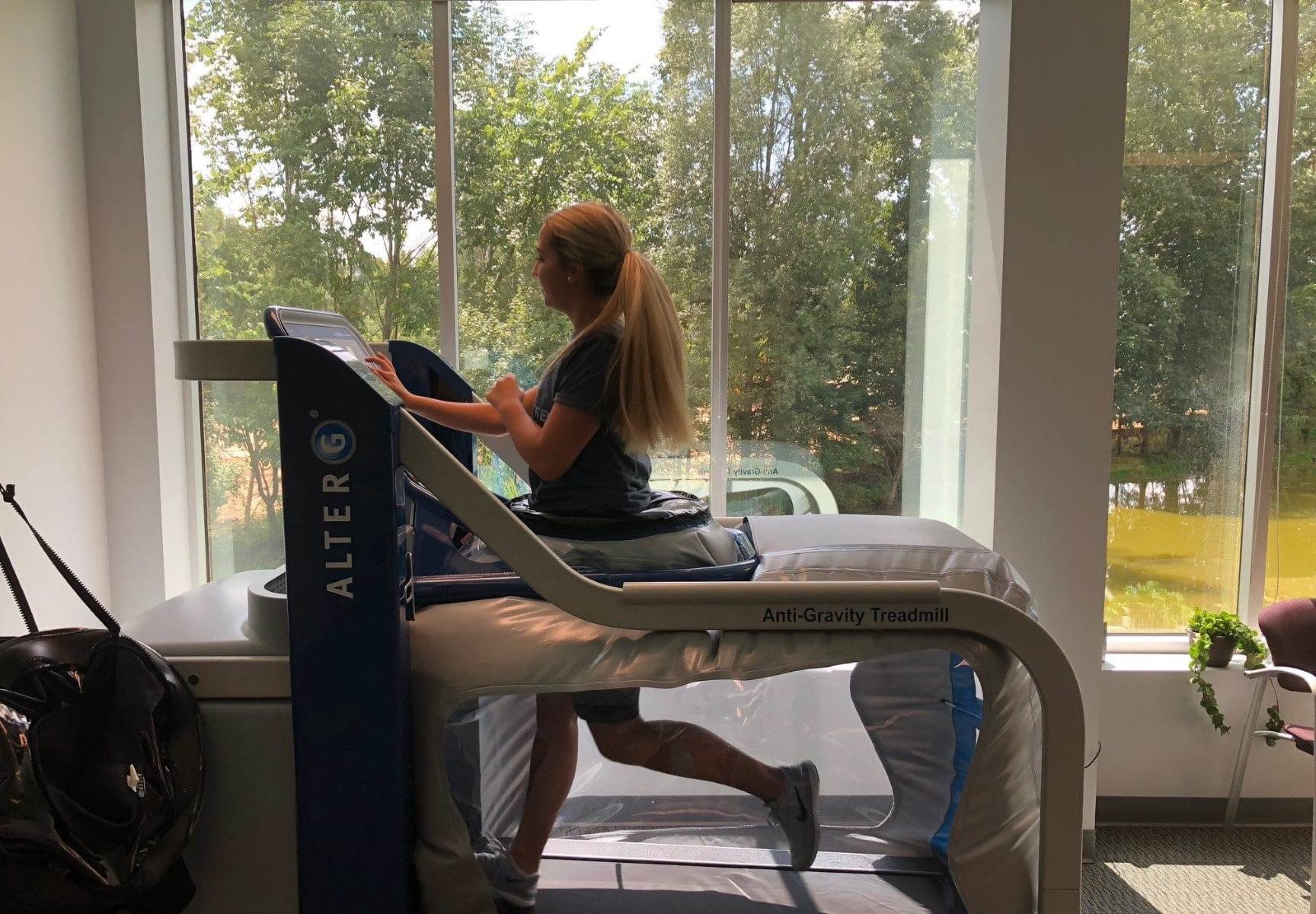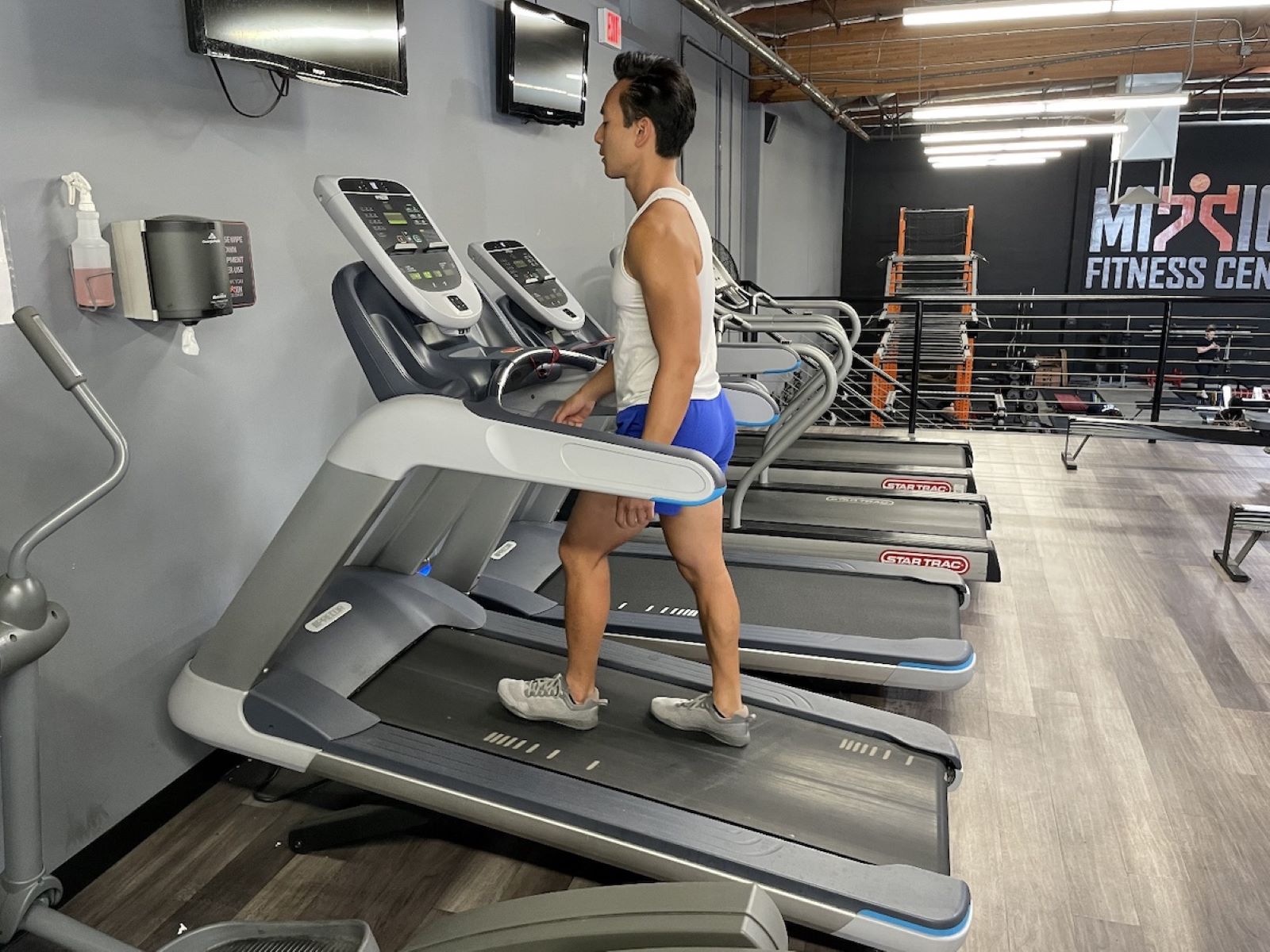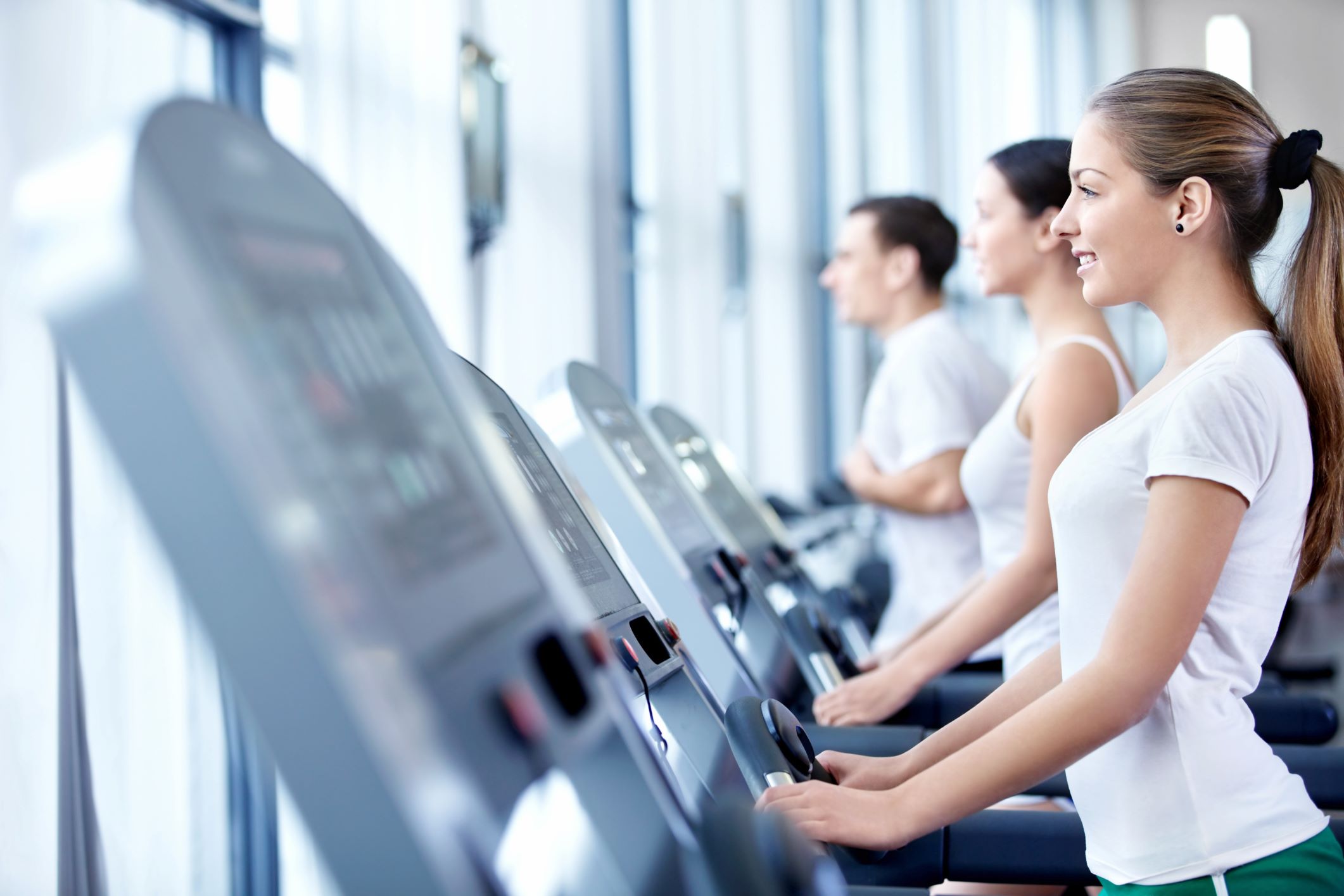

Featured
How Much Power Does A Treadmill Draw
Modified: January 2, 2024
Discover the power consumption of a featured treadmill. Find out how much electricity a treadmill draws and optimize your energy usage.
Introduction
Welcome to the world of fitness equipment, where treadmills are a popular choice for individuals looking to stay fit and active. With the increasing emphasis on energy efficiency and sustainability, many treadmill users are now curious about the power consumption of these machines. Understanding how much power a treadmill draws is not only important to manage electricity costs but also to make informed choices towards a greener lifestyle.
In this article, we will delve into the topic of treadmill power consumption and explore the factors that affect it. Additionally, we will discuss the average power usage of treadmills, energy-efficient options, and provide tips on lowering treadmill power consumption. By the end, you will have a comprehensive understanding of the power requirements of treadmills and ways to optimize their usage.
Whether you already own a treadmill or are planning to purchase one, it’s crucial to have a clear understanding of its power needs. Let’s dive in and explore the fascinating world of treadmill power consumption!
Understanding Power Consumption
Before we delve into the details of treadmill power consumption, let’s first understand what power consumption means. Power consumption refers to the amount of electrical energy used by a device over a specific period of time. In the case of a treadmill, power consumption is measured in watts (W) and is an indication of the machine’s energy usage.
The power consumption of a treadmill can vary depending on several factors, including the speed at which it is operated, the incline level, the user’s weight, and the specific features and accessories it possesses. Generally, the higher the speed and incline, the more power the treadmill will draw.
It’s important to note that power consumption is not the same as energy consumption. Power consumption refers to how much power a device uses at any given moment, while energy consumption refers to the total amount of power used over a period of time. For example, if a treadmill consumes 500 watts of power per hour, its energy consumption would be 0.5 kilowatt-hours (kWh) for that hour.
Understanding power consumption is essential for several reasons. Firstly, it allows you to estimate the impact on your electricity bill. By knowing the power consumption of your treadmill, you can calculate its energy usage and make informed decisions about usage patterns or energy-saving measures.
Secondly, understanding power consumption helps you contribute to a more sustainable and eco-friendly lifestyle. By optimizing the power usage of your treadmill, you can reduce your carbon footprint and minimize energy wastage, in line with the global efforts to combat climate change.
Now that we have a basic understanding of power consumption, let’s explore the various factors that influence the power requirements of a treadmill in more detail.
Factors Affecting Power Consumption
Several factors contribute to the power consumption of a treadmill. Understanding these factors will help you better manage and optimize the energy usage of your machine. Let’s take a closer look at some key factors affecting treadmill power consumption:
- Speed: The speed at which you operate your treadmill has a significant impact on its power consumption. Higher speeds require the motor to work harder, resulting in increased power draw. If you regularly run at higher speeds, be prepared for higher power consumption.
- Incline Level: Treadmills equipped with incline features allow you to simulate uphill running. However, the incline level also affects power consumption. When you increase the incline, it adds resistance to the belt, requiring more power from the motor to maintain the same speed. Higher incline levels increase power consumption accordingly.
- User’s Weight: The weight of the user can impact the power consumption of a treadmill. Heavier individuals require more energy to move the belt, increasing the power drawn by the motor. If multiple people with varying weights use the treadmill, power consumption may vary accordingly.
- Machine Features: The features and accessories of a treadmill can impact its power consumption. Treadmills with built-in fans, speakers, or touchscreen displays require additional power to operate these features. Additionally, features like heart rate monitors or preset workout programs that adjust speed and incline levels can also affect power consumption.
- Maintenance and Lubrication: Proper maintenance and lubrication of the treadmill can contribute to its energy efficiency. A well-maintained machine with properly lubricated belts and decks will operate more smoothly, reducing the strain on the motor and potentially lowering power consumption.
By considering these factors, you can have a better understanding of how the power consumption of your treadmill may fluctuate based on your usage patterns and machine specifications. In the next section, we will explore the average power usage of treadmills and how you can choose energy-efficient options.
Average Power Usage of Treadmills
The average power usage of treadmills can vary depending on the specific model, brand, and the factors mentioned earlier. On average, most home treadmills have power ratings ranging from 1.5 to 3.0 horsepower (HP). However, it is important to note that the power rating alone is not indicative of the actual power consumption.
To get a better understanding of the power usage, it is useful to look at the wattage. A typical home treadmill may consume anywhere between 600 to 1200 watts (W) of power during operation. This power consumption can increase if you’re running at higher speeds, using a higher incline, or if the treadmill has additional features and accessories that require more power.
Keep in mind that these are rough estimates, and the actual power consumption may vary based on several factors. It is always recommended to consult the manufacturer’s specifications for accurate information regarding power usage.
In commercial gym settings, where treadmills are used more frequently and by a larger number of people, the power consumption can be higher. Commercial-grade treadmills typically have more powerful motors and may consume between 1000 to 2000 watts or more.
It is worth noting that the power usage of treadmills is not constant throughout the entire time of operation. During warm-up or cool-down periods, when the speed and incline are lower, the power consumption may be lower as well. Intense workout sessions, where higher speeds and inclines are used, may result in higher power consumption.
Understanding the average power usage of treadmills can help you estimate the impact on your electricity consumption and make informed decisions about usage patterns. In the next section, we will explore energy-efficient treadmills and how they can help minimize power consumption.
Energy Efficient Treadmills
With increasing awareness about sustainable living and energy conservation, manufacturers have started producing energy-efficient treadmills. These treadmills are designed to minimize power consumption without compromising on performance and user experience. Here are some features to look for in energy-efficient treadmills:
- DC Motors: Treadmills with direct current (DC) motors are generally more energy-efficient compared to those with alternating current (AC) motors. DC motors are designed to deliver power on demand, allowing for efficient energy consumption.
- Efficient Motor Control: Look for treadmills with advanced motor control systems that can regulate speed and incline levels smoothly. These systems can optimize power usage and minimize energy wastage.
- Energy-Saving Features: Some treadmills come with energy-saving features such as automatic shut-off after a period of inactivity or sleep mode when not in use. These features help conserve energy when the treadmill is not being used.
- LED or LCD Display: Treadmills equipped with energy-efficient LED or LCD displays consume less power compared to models with bright and large displays.
- Programmable Workouts: Treadmills that offer programmable workout options allow you to set specific workout durations and intensity levels. This feature helps optimize power consumption by controlling the duration and intensity of the workout session.
- Smart Power Saving: Some treadmills have smart power-saving features that automatically adjust the power consumption based on the user’s weight and workout intensity. These features help optimize power usage without sacrificing performance.
When purchasing a treadmill, check for energy-efficient certifications or labels such as ENERGY STAR. These labels indicate that the treadmill meets strict energy efficiency standards set by regulatory bodies.
Energy-efficient treadmills not only help reduce your carbon footprint but also save you money on electricity bills in the long run. By choosing an energy-efficient treadmill, you can make a positive impact on the environment while enjoying your fitness routine.
Now that we understand energy-efficient treadmills, let’s explore some practical tips to lower power consumption and make your treadmill usage even more efficient in the next section.
Tips to Lower Treadmill Power Consumption
If you’re looking to lower the power consumption of your treadmill and make your workouts more energy-efficient, here are some practical tips to consider:
- Use Lower Speeds and Inclines: Running or walking at lower speeds and incline levels can significantly reduce power consumption. Adjusting the settings to more moderate levels can still provide an effective workout while using less energy.
- Optimize Workout Duration: Consider shorter workout sessions or interval training. By breaking your workout into shorter bursts of high-intensity exercise followed by rest, you can achieve the same fitness benefits while reducing overall power usage.
- Unplug When Not in Use: When the treadmill is not in use, make it a habit to unplug the machine. Even when not in use, treadmills in standby mode can consume a small amount of power, so unplugging ensures zero power consumption.
- Adjust Display and Accessory Usage: Dimming the display or turning off unnecessary features like cooling fans or built-in speakers can help lower power consumption. Only use the accessories and features that you truly need to conserve energy.
- Maintain Proper Lubrication: Regularly lubricate the belt and deck of your treadmill as suggested by the manufacturer. A well-lubricated treadmill operates more smoothly, reducing friction and the strain on the motor, ultimately lowering power usage.
- Monitor Your Energy Usage: Consider using a power meter or monitoring device to track the energy consumption of your treadmill. This will give you a better understanding of your power usage and help you identify areas where you can make adjustments for greater energy efficiency.
- Choose Energy-Efficient Settings: Many treadmills have settings that allow you to choose energy-saving modes or programs. Take advantage of these options to optimize power usage and reduce unnecessary energy consumption.
Implementing these tips will not only help you save energy but also contribute to a more sustainable and eco-friendly fitness routine. Lowering the power consumption of your treadmill not only benefits the environment but can also lead to significant savings on your electricity bill over time.
Now that you are equipped with these energy-saving tips, you can make the most out of your treadmill workouts while minimizing power consumption. Let’s wrap up this article with the key takeaways and a final thought.
Conclusion
Understanding the power consumption of treadmills is essential for managing electricity costs and making eco-conscious choices. Factors such as speed, incline level, user weight, and machine features all contribute to the power requirements of a treadmill. By being aware of these factors, users can make informed decisions to optimize their power consumption.
On average, home treadmills consume around 600 to 1200 watts of power during operation. Commercial-grade treadmills may have higher power requirements. However, it is important to remember that power consumption is not constant and can vary based on usage patterns and machine specifications.
Energy-efficient treadmills with features like DC motors, efficient motor control, energy-saving options, and programmable workouts are available to minimize power consumption. By choosing an energy-efficient treadmill, users can save money on electricity bills and reduce their carbon footprint.
Additionally, there are several practical tips to lower treadmill power consumption, such as using lower speeds and inclines, optimizing workout duration, unplugging the machine when not in use, adjusting display and accessory usage, and maintaining proper lubrication.
By implementing these energy-saving strategies, treadmill users can enjoy their workouts while minimizing power consumption and contributing to a more sustainable lifestyle.
Remember, being mindful of power consumption not only benefits your wallet but also helps protect the environment. So, go ahead and make smart choices to optimize the energy usage of your treadmill.
